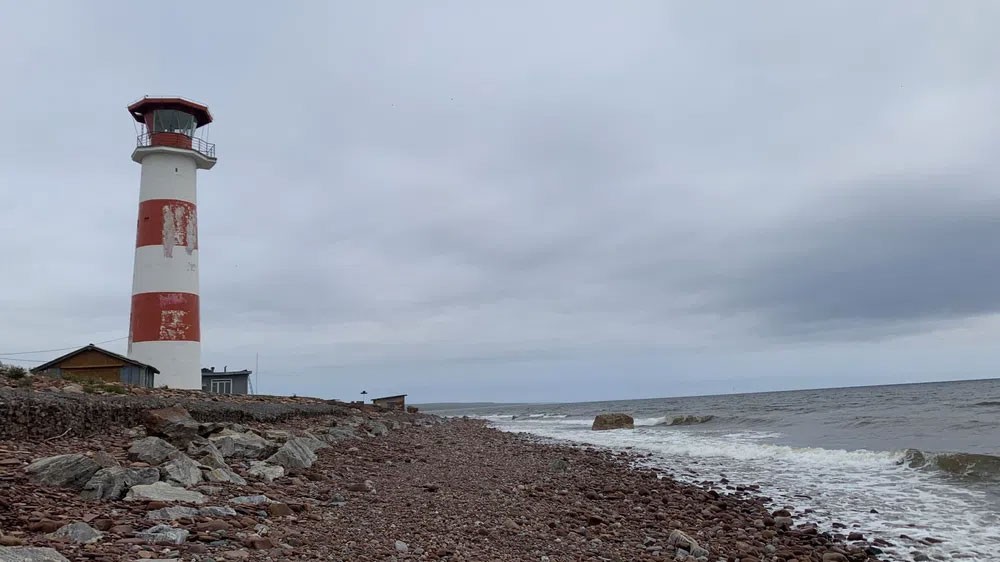
500 years ago, those seeking freedom came to the White Sea
ADVERTISEMENT
By Tatiana Britskaya
Residents of Kashkaran appear around the bend in the middle of the forest. It seems that you know that there will be a village on this kilometer but you still gasp when the huge lead colored sea swings opens up before you. The residents of Kashkaran have the sea, a stony beach and a lighthouse. This, in principle, is enough to make one happy although there are also several huts, sand, a temple and a fresh playground. But there are almost no people at all. There are only 88 inhabitants according to the census. On one deserted street, there is a library, a church and a hut decorated with a portrait of Ilyich [Lenin].
Fish is bread and the sea is god
Free Novgorodians began to come here in the early Middle Ages but fled in the 16th century to avoid the executions of Ivan the Terrible. Here, there were both Novgorodians and Pomors, both are people who live by the sea.
The Tersky coast of the White Sea is in the very south of the Murmansk region. The White Sea is soft and tender in summer with its shells and seaweed but sometimes it can offer something that is remembered for centuries. On the night of January 5, 1888, an 11-meter ice tsunami almost completely wiped Kashkaran off of the face of the earth. 65 meters of ice went deep into the shore, destroying 27 barns, 11 banyas and 6 yards. It also wiped out the huts closest to the sea along with their cattle yards, two merchant ships and 41 karbas.
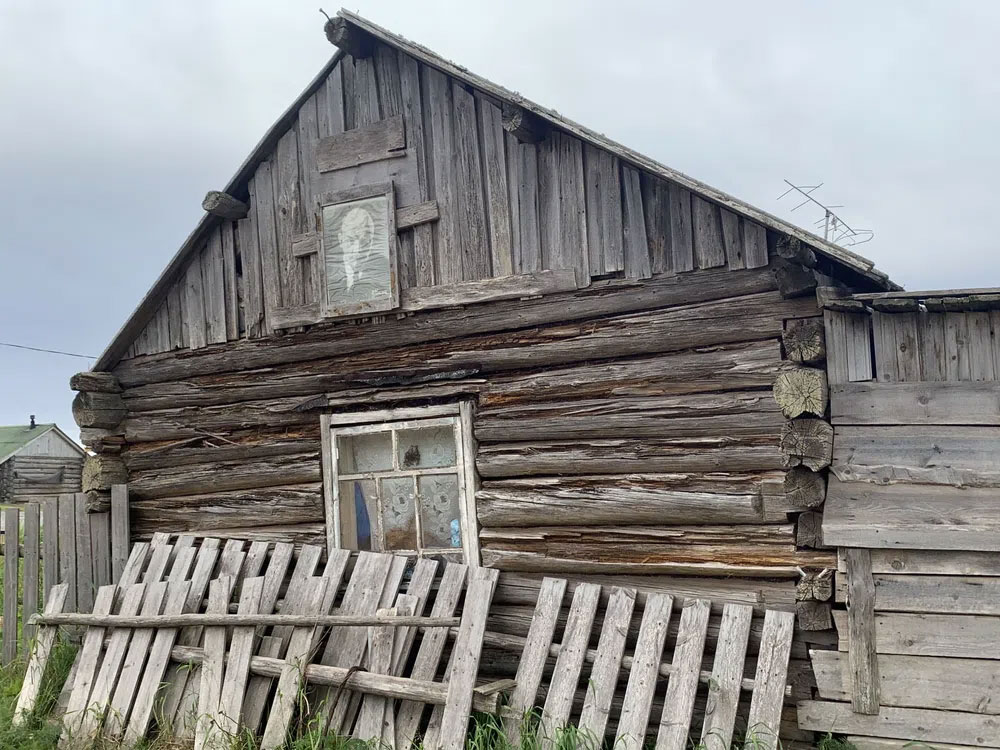
ADVERTISEMENT
The current Murmansk metropolitan, archbishop Vladyka Mitrofan Badanin, a former priest from Tersk and a self-taught writer paints the event a little differently. Allegedly, a prayer in front of a locally revered icon stopped nature. In fact, nature was stopping itself. And, of course, their “Lappish goddesses”, who is accused of the misfortune in his book, had nothing to do with it. The Pomors and Sámi long lived side by side and were never in conflict.
It’s just the sea. She feeds us and protects us but she can also get angry. The sea is like a rock. Only the rock and true believers who were spirited away from their homelands for freedom came to the uninhabited North. Those Novgorodians who would not submit were fleeing Muscovy repressions. They became in fact emigrants. They colonized this coast and they remained on their own. This self-reliance has always irritated the powers and perhaps because of this, the Pomors have never received the status and privileges of «indigenous people». Their cultural autonomy only got them far-fetched accusations of separatism in Arkhangelsk.
Russian mistrust and weariness of foreigners is unusual for local people. They have always traded with the Norwegians and have always felt they were related. They had never known serfdom. They also did not like the way of life familiar to Russian peasants where they plow in the summer to the seventh sweat and then spend the winter sleeping over the stove.
Pomors call the sea a field. But there is no napping over the fireplace with the sea. You must fish. There are cod and salmon. Fishing is the Pomor’s bread. The sea is the Pomor’s god.
In their efficiency and simplicity of life, they are similar to Lutherans. They do not like gilding here or in their churches. They don’t like domes covered with shiny metal. The churches are wooden, gray and salted with sea winds.
On the shore, there are traces of a recent storm. Shreds of foam are scattered by the sea on the withered grass.
Not far from here, but closer to Kuzrek, there is a tonya, a fishing spot, which has long been defended by Sergei Popikhin. It has belonged to his family for 400 years. No matter what the newcomers try to establish, they are hounded by local regulations and made to pay tributes. But despite fines and criminal cases, Popikhin has held onto what he has. He said it is important that people know that the Pomors need the rights to catch the small and sweet white herring and be able to process them at their factory. And they have a small factory and they catch fish. Nobody believed they could do it but Popikhin is still on his island. There is no electricity or Internet but there is sea and karbas to fish from.
Nearby is the reborn village of Kuzreka, saved not by a Pomor by blood but by the warmth of spirit of Irina Volkova, a Pomor by marriage. The Pomors, by the way, have always had gender equality and while a man is at work, a woman (there was never a village word «baba» in use here) managed not only the house but also the boats. The women went to the sea and checked the nets. Women’s karbas races are still held here in the summer.
Irina Volkova came to the Tersk Coast many years ago. She dreamed of saving an old village where they wanted to build a depository for spent nuclear fuel. Despite the fact that the neighboring Umba is already a restricted zone (there is a testing ground for submarines that periodically shock tourists with sudden surfacings), the radioactive burial ground would turn the Tersk coast into a continuous exclusion zone.
To prevent this, Irina came up with a fairy-tale story for Kuzreka.
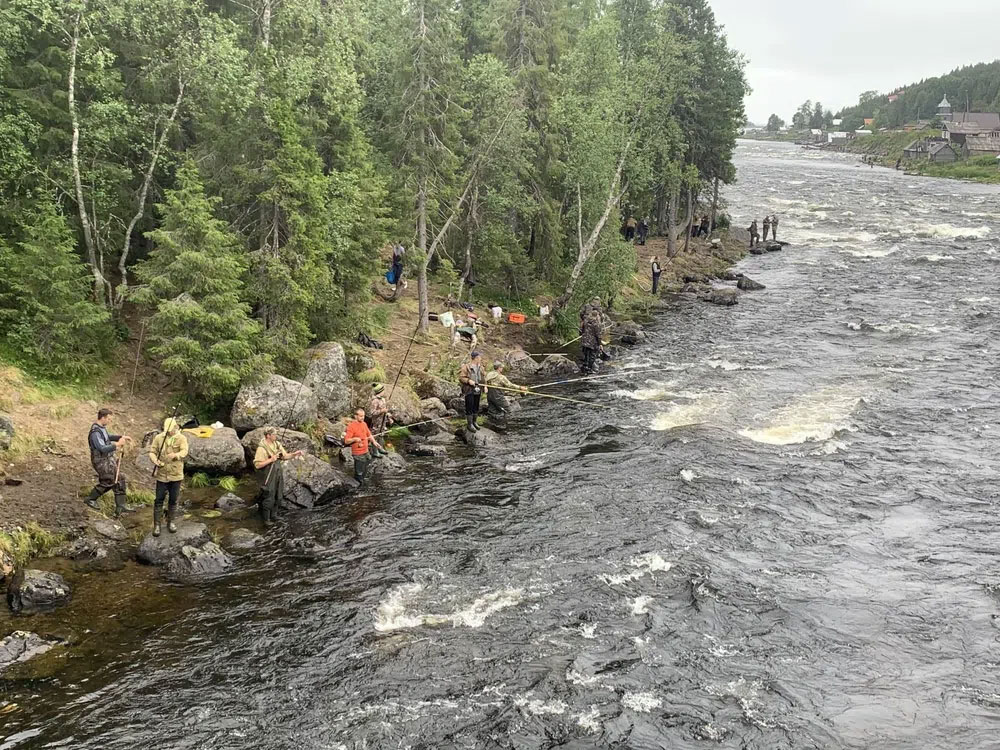
«I sponsored and organized the Pomeranian Kozuli celebration here in the summer. Kozuli are traditional decorated gingerbread cookies. We made the cookies, invited craftsmen and people could enjoy a Yule treat despite that Kozuli are for winter. We do everything without money and have dancing, songs and even a beauty contest for garden scarecrows. People began to come to look at the curiosities and after a couple of years, residents even began to return to Kuzreka. The Kozuli were like a fresh breath of life that brought some soul back into the village and it rose and started to live again.» Are there many more dead villages in Russia that have been revived?
Irina makes jam from pine cones and tells the guests how well and freely she lives on the Tersk coast.
The March of the Floating Cows
The drive here goes on for so long that the asphalt ends and the Varzuga service road begins. Red sand crunches under the wheels. If the grader passes through here, the road conditions are good. They have been promising asphalt for many years but, I must say, the Varzugians themselves do not really insist on this. There is no road so there are no extra people. You cannot say that they do not like strangers here, they just ignore them. In a hard-working village, a loitering person is nonsense. They don’t make any fetish out of tourism and they don’t live for the show.
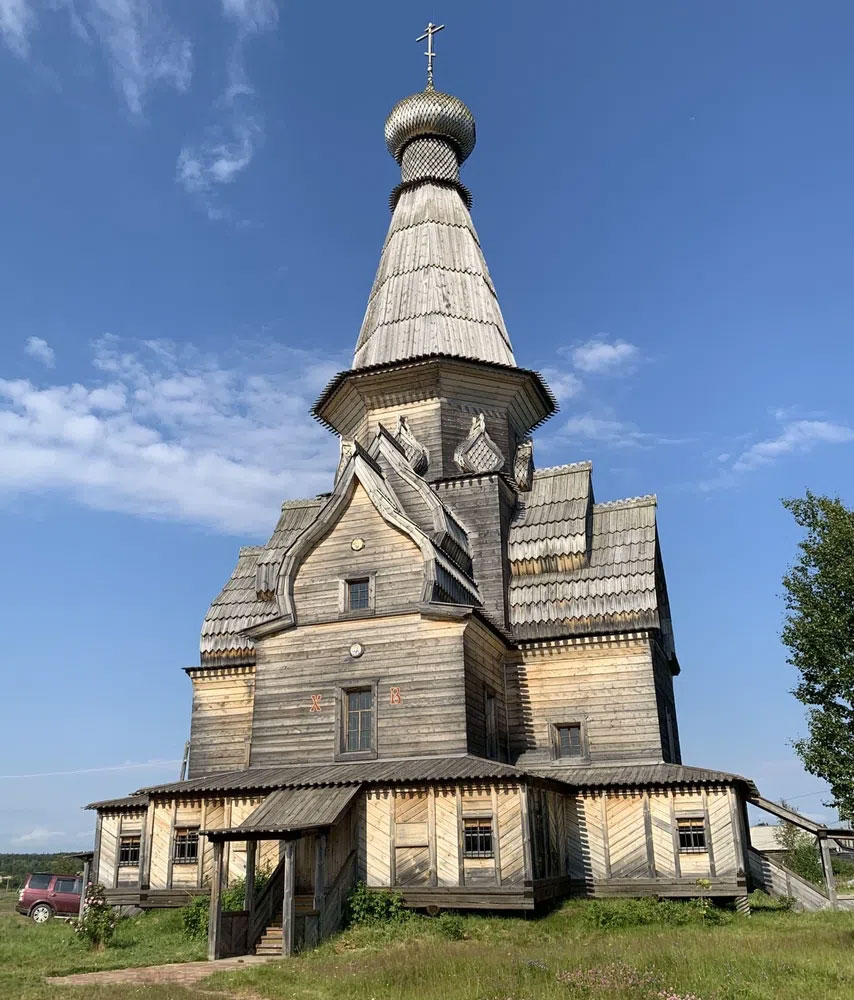
And every time they have started to build a road in any way, the locals have flatly refused to have a bridge connecting the two banks of the village. They have decided it would spoil the view. And in general, bridges are pampering. Why use a bridge when there are boats? And indeed, the boat crossing the Varzuga River remains the only way to get from one bank to the other. Once there were boys sitting on the oars. The collective farm gave them this part-time job in the summers. Now the boats are pulled by adults. The crossing is free of charge. You wait for a boat while standing ankle-deep in the sun-warmed river water with curious and trusting baby fry scurrying at your feet. The boat goes from the Nikolskaya side to the Uspenskaya side. On one side, there is the St. Nicholas Church and on the other is the Assumption Cathedral, famous for being assembled without a single nail. It is rarely opened though and more often they attend services in the squat Athanasian church.
Time in the village does not flow synchronously with the Russians. It is difficult to imagine a still thriving collective farm called «Shoots of Communism» (Всходы коммунизма). But this is the name of the «city-forming enterprise» of the village of Varzuga. It was a million dollar enterprise for the previous government and remains so under the new one. They decided not to change the name and this is a rare example of communism raising healthy capitalist shoots. If so, it is because the village collective farm owns the fishing camps where premium tourists catch salmon for a lot of money. They use the proceeds to build houses for the collective farmers, a school, a hotel…
Varzuga lives well. And it has always been so, both before the «soviets» and after. Varzugians on the Tersky coast were called «pharaohs» and a Varzugian on a train was like a pharaoh on a chariot. The word «train» here is the name of a narrow boat used for moving along the rapids.
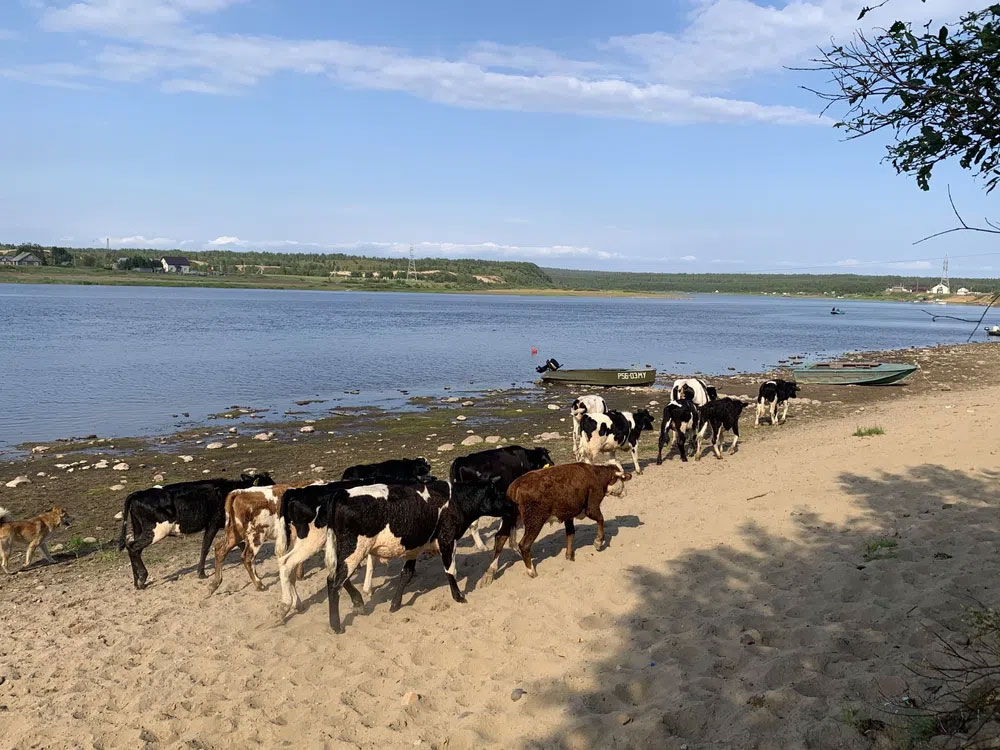
And not only boats float on the rivers. Cows also cross the Varzuga River by swimming. Twice a day. They graze on an island in the middle of the river. For decades, this land was a reindeer «migration path» but it has been firmly assimilated by the cows. When the river is shallow, they wade across and when it is full, they swim. When I was there, they were just returning for milking. A shepherd on the island was giving instructions to his wards and pointing the way with his hand. A little further on, they crossed all by themselves. A flagship bull was the first to step ashore. As it should be. A shepherd’s dog met the herd and it completely and independently accompanied the soaked detachment to the stalls, strutting along the shore next to them. Cows here, of course, are not sacred animals but looking at what is happening, you can’t help but feel reverence for them.
Varzugians also sing. The Varzuga Pomor choir was once famous and once even recorded for «Melodies», the popular television show. The choir is still here and both the grandmothers and young women still sing there. Men are not taken into the choir but usually sing along with their wives from the audience. The only male participant was a harmonica player named Efim Kovarnin. It was Kovarnin who in 1936 suggested that the villagers unite to preserve the musical culture of the Pomers..
«…there are headaches and heart aches as we wait for news from our love… «. The songs are sad but they make your soul happy. Platon Zaborshchikov, the brother of Pyotr Zaborshchikov, the guardian of Varzuzhsky antiquity and the creator of the village museum, once told me that he sings at home with his wife every day. He said it was easier to live that way.
«I will go with grief to the sea. Someone is sailing to our shores. The sailing ship on the sea has dropped its white sails. The ship is blue and I see a Persian hat. My dear friend is walking the decks… «. A «song about the life», of course, and about some Stepanida or Makrida patiently waiting on the shore. They like the old names here. Evstolia, Elikonida, Kallisfenia… And there are very few surnames. There are Rogozins, Zaborshchikovs, Popovs, Chunins, Moshnikovs and that’s the whole village.
«My grapes are red and my grapes are gre - e - en…», the Varzug choir pulls us along. This song is the one that struck Ivan Bunin, the Nobel prize winning Russian author. He wrote that these were not Russian or even northern «grapes» but the biblical melodies brought to him an image of a primordial garden of Eden.
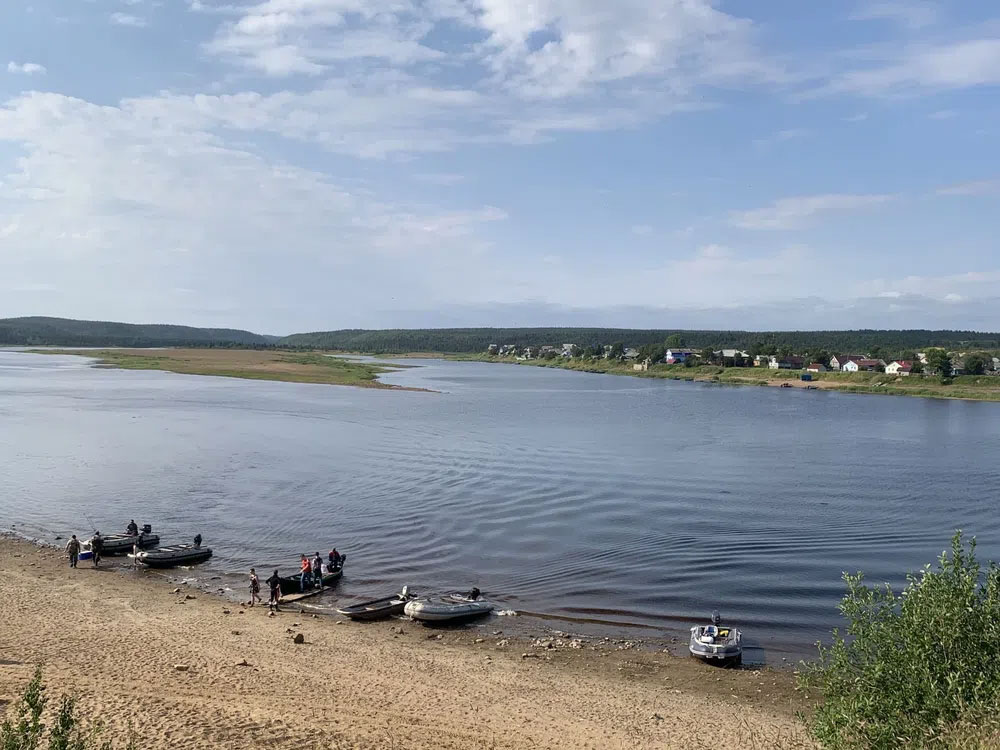
And perhaps the image of the Garden of Eden is embodied In Varzug. The sky is blue, the children are ruddy and the cats are like Sergei Dovlatov. They are heralds. Everyone is fine.
«… I will buy a Taglian plate with silver circles and gilded borders and I will, I will give the plate to a friend…»
Platon Zaborshchikov told me that if I didn’t know the words, I should ask myself why they are singing and then just listen… and then I will sing. I just needed to listen and I would find myself singing along.
People and horses
Before reaching Varzuga, there is an inconspicuous exit heading off away from the road. And it’s good that it’s inconspicuous. Not everyone who tries going to Kuzomen is able to get there. The problem is that four-wheel drive is required and you need caution and knowledge of every path here.
Kuzomen, translated from Karelian to Russian means spruce cape. There was once a coniferous forest here, so high-quality that all of it was cut down and sold 200-300 years ago. And then the desert came. The desertification finally ended in the 1920s however, vintage charts from the 17th century already mention that «the sands go on for ten versts (maybe 11km) and that they are cutting the forests further and further away from the shores.»
For 30 years, scientists and environmentalists have been trying to restrain the advancing desert from going too deep into the surrounding forests. They plant trees. But it might be impossible to turn 1,600 hectares of sand back into pine forest.
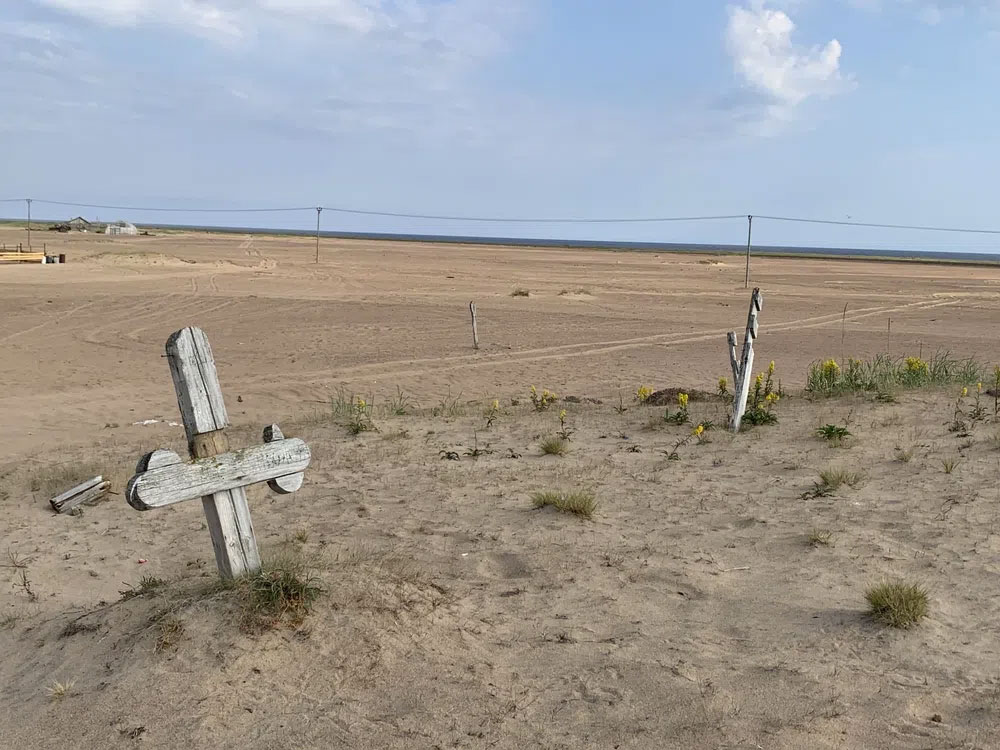
We drive down the eroded reddish-brown service road into the Sahara. If you go straight down the center of the road, you will almost certainly get stuck in any car. But I know the trick and I’m driving along the seashore. About halfway there, I meet tourists stuck to the «belly» of the road in a passenger car.
«We were told that the road would be better here.»
A little further on, our «Gazelle» van is stalling. We also thought we were traveling along the «good road». Praising the beauty of the northern region to potential tourists, they often forget to tell them about the dangers and every summer, they have to pull stranded sedans from the rocky tundra of the Sredny and Rybachy peninsulas in bundles. Jeeps pull out cars getting licked by the tide in Teriberka and dig them out in the desert. Those who have the spare 500 rubles can rent a broken «Niva» from some Varzugian who knows this sand like his own yard.
Whether you know it or not, the place is not easy. The sands are always in motion so the roads often change configuration. And don’t even talk about the landscape of Kuzomeni itself. There is even more danger there in the ruts and slippery sand. The steering wheel is torn from your hands and forget your arrogance, drivers hoping to get there in a hurry can just forget about it. You have to move quietly, like a guest in someone else’s house, if you need to get to the village.
And right here, we are already being greeted by locals. It is worth turning off the engine. The giant muzzle of a curious horse passes through my window. Don’t be so fast about kissing him on his suede nose. This is not a greeting, its a racket. The herd of wild horses is a tourist attraction and the main danger.
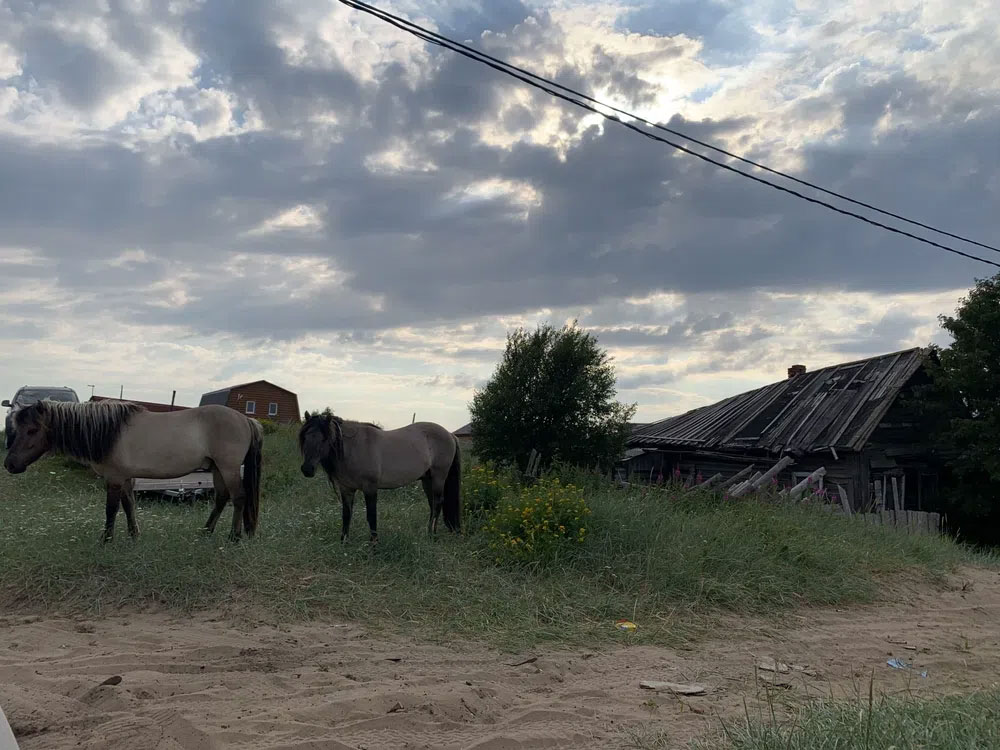
In the 80s, one of the Tersk collective farms experimentally brought several Yakut horses here. They were hardy and stood up well to the cold. They wanted to use them as plough horses but their freedom-loving guests flatly refused to be harnessed and the horses were released and given leftover bread.
The herd quickly went wild and became a threat to local residents. This was not out of spite but out of hunger. There isn’t much to eat in the desert and in winter, there is nothing at all.
Now the horses eat up the meager Kuzomensky gardens. They feed on algae and know perfectly well on what days and at what hour bread is brought to the village. And they watch and wait for customers right at the exit. And they bite. More than once. And they got our food bags. Local residents tell stories about how they tried to tame one of the stallions. They lured him and harnessed him to a cart. The horse submitted. But the moment the wagon was loaded, the horse saw his relatives at a turn and ran over to great them. He took off still connected to the harness and cart and that was the last they ever saw of him.
The last couple of years, the local Chunin family has taken patronage over the herd. They started a YouTube channel for the horses and this promotion generated contributions from some benefactors. This is the second year in a row that they have volunteers bringing a supply of feed to Kuzomen for the cute wild animals for the winter. The horses still beg and scare the gaping tourists. And literally, don’t try putting your finger in your mouth near the horses.
Once it was Kuzomen that was the capital of trade and fishing. They had more than Varzuga and even more than the current district center of Umba. They were a parish center that had a fair that was known throughout the White Sea. There was a salt works, a steamboat pier (the steamboats went to Murmansk), two churches, a school, a shop and a telegraph office. And in 1862, a village school was opened.
Kuzomen did not become impoverished under the Soviets. They built a hospital, two more schools, a boarding school and they had a millionaire collective farm that kept fishing boats in Murmansk.
Now there is only one primary school in the village and it almost closed for lack of a teacher. To close the primary school meant to close the village as there were few people here who could send a 6-year-old child to a boarding school. But the teachers searched all over the world and found Katya. Katya is from South Carolina (USA) or rather, she studied there. She is here on a romantic impulse that has led her to the end of the world. She says is has been the respect and care of her fellow villagers and this is what has kept her.
«The first winter was very difficult, especially when a lot of snow fell. It was so bad, I couldn’t even get out of the house and walk to school. So the parents of the students came and dug me a path through the snowdrifts. A bit later, I had my husband to help dig my paths.»
Ekaterina married a local and now they have a small child. She has had to run home to feed the child during recess. There is no maternity leave here. How can she take maternity leave when there is no one to replace the teacher? They have never gone anywhere. Teacher Dvinina recalls with a smile that when there were signs that she found things unbearable, the parents of the students, sensing something was wrong, began to send their children to her with touching gifts. If a boy went fishing, he would bring her some herring. You can’t refuse a child. It was not a bribe. And how could she leave them?
Pomors are indifferent to curious strangers. But for those who are accepted as their own, they stand like a mountain. Now Katya and her husband have a house and a dog. Katya is a local and now there is one more family in Kuzomeni.
«My friends in Murmansk don’t understand why we really don’t want to leave here. Many just do not want to understand. It’s nice here. They say, «But you don’t have a lot of stores to buy things in.» And I tell them that it’s all unnecessary when you get used to it. Having a lot of stores is not the main thing.»
When Russia annexed Crimea, Kuzomeni had its own holiday but for a completely different reason. Kuzomen was finally connected to the electric grid in 2014. For the first time, light began to burn in homes around the clock and not only for 6 hours out of 24.
The sun is setting and oblique rays are illuminating the wooden crosses of the cemetery. This place is ancient but always in motion. The dunes are constantly changing and the graves change along with them. Sometimes you come in the morning and an ancient two-meter cross is barely visible from the sand. Kuzomlyans have been buried here since the 16th century. Here they are received and lain to rest by the Pomor god and by the sea roaring nearby.
Translated from Russian by Adam Goodman

